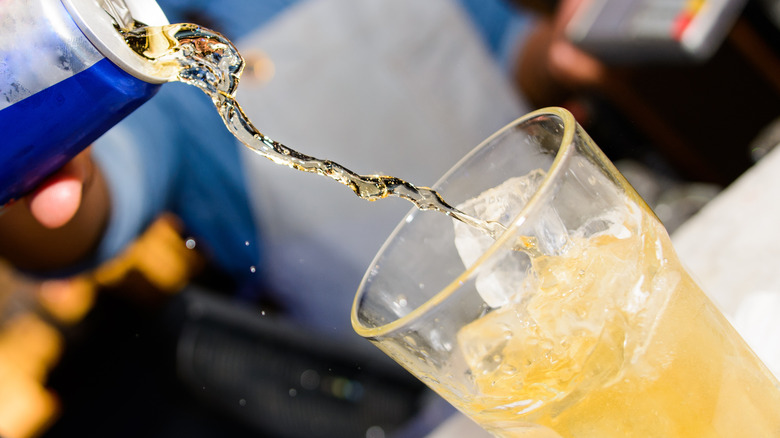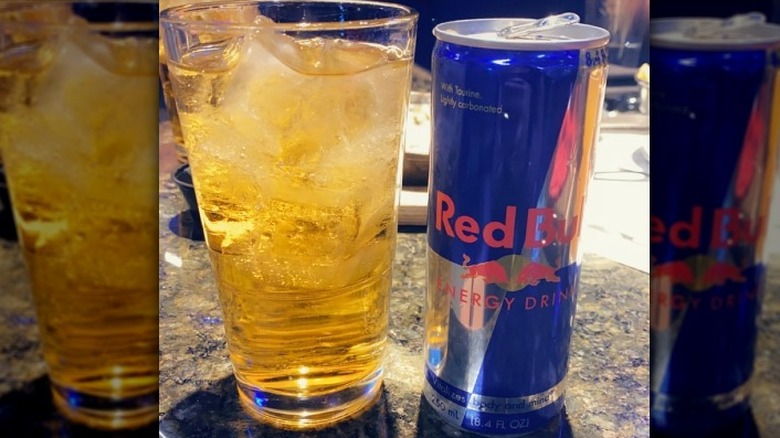The Fascinating Origin Story Of The Infamous Vodka Red Bull
Tracing the very first pour of a vodka Red Bull is problematic. Though many in the bar and nightclub scene have attempted to lay claim to the invention, it's tricky to pinpoint. We can say that anyone wanting to mix vodka with Red Bull has a goal in mind. "Almost from the moment the caffeine-heavy energy drink Red Bull was introduced in the late 1980s, it was mixed with alcohol by revelers intent on bleariness without weariness," food critic Frank Bruni wrote in the New York Times.
"The problem? Just because you don't feel wasted, you are. Big time," writes Haley Hamilton in Mel Magazine. "Your hangover the next day will let you know. And possibly where you wake up, because it might be jail." Hamilton's detective work points to a chemist named Chaleo Yoovidhya in Thailand who began selling energy-enhancing tinctures called Red Gaur to workers. When an Austrian businessman, Dietrick Mateschitz, met the chemist, wheels started to turn once a gulp of this concoction seemed to eradicate the European's jet lag. The duo teamed up to bring the product to the masses, starting with Austrian skiers.
Though the merging of Red Bull and vodka might be more obscure, the company's pointed efforts to sponsor and infiltrate the worlds of music and entertainment were anything but subtle. The energy drink crossed lines from extreme sports to the music industry with the introduction of the Red Bull Academy in Berlin, and then entered the arena of clubs and bars.
Establishing marketing footholds
When Red Bull was brought to the American market, the beverage didn't find immediate traction. So the brand enlisted rave-organizing clubs, such as San Francisco's Butter. When Butter was given money to put Red Bull on their menu, dominoes were stacked. "If not for Butter's place and role in the community, it's unlikely the R.V. would have blown up the way it did," one of Butter's owners told Punch. R.V., as the combination came to be known, emerged as one of the more popular orders: An 8-ounce Red Bull mixed with two ounces of Svedka vodka poured over ice. By establishing an affiliation with Butter, the company had an in with party promoters — and nightclubs across the country.
With investment pushing sales, vodka Red Bulls were slid across bars, despite warnings written on Red Bull cans that stated the drink shouldn't be served with alcohol. Mixing alcohol with the stimulating effects of caffeine can mute the impact of the caffeine, and the caffeine can smooth out the wallop of the alcohol, leading some revelers to put back more drinks without realizing how drunk they actually are. It's understandable how vodka Red Bull became synonymous with raging parties, even if we're not entirely sure how the first drink came to be poured.

